Range of Motion Exercises
What is a Range of Motion Exercise?
Range of motion (ROM) exercises are essential activities designed to keep joints flexible, improve muscle strength, and maintain overall mobility. These exercises are particularly important for individuals recovering from injury, surgery, or those suffering from chronic conditions such as arthritis.
A loss in the range of motion can be caused by a variety of factors, including strained or sprained muscles or joints as a consequence of an accident or sports injury, inactivity after surgery as well as simple inactivity. Exercises for range of motion that focus on these injured regions can help repair the damage and give your muscles and joints the freedom to move freely again. They’re made to deal with the specific issue you’re facing and support your recovery of range of motion and strength without damaging yourself more.
Everybody has a distinct experience. For instance, some people are able to perform full splits, but others are unable to do so because their muscles and joints aren’t free enough. Understanding your range of motion might help you stay physically well and avoid accidents.
After an accident or surgery, range-of-motion exercises are recommended to restore joint function. They can also be used as a continuous therapy for conditions like persistent osteoarthritis. By gradually expanding the patient’s range of motion in both joints and muscles and reducing pain, swelling, and stiffness, they hope to maintain the patient’s flexibility.
Pain alleviation from a bent joint is oftentimes possible. However, this reduces joint mobility, therefore it is counterproductive. Range-of-motion exercises progressively stretch and strengthen muscles, enhancing joint flexibility without causing damage. They can be performed by patients alone or under the supervision of physical therapists. The body component that requires attention dictates the suitable exercises.
Types of Range of Motion Exercises:
In order to prevent pain from impeding growth, it is crucial that these exercises be increased gradually. Exercises to improve range of motion often fall into three categories.
Passive Range-of-Motion Exercises

To preserve joint flexibility, individuals with degenerative or congenital problems or serious injuries may benefit from these activities.
For joints that have become immobile as a result of trauma or paralysis, they are helpful. In passive range of motion exercises, the therapist moves the patient’s limb or body part around the tight joint, gradually extending the muscles and providing a reminder of proper movement technique. To encourage a quicker recovery, therapeutic stretching exercises are typically coupled with passive range-of-motion exercises.
In order to help you proceed toward a possible recovery, medical specialists will flex your muscles and bend your joints on a regular basis if you are immobile. They could even impart helpfulness skills to your family.
Active-Assistive Range-of-Motion Exercises
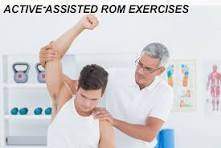
As the patient moves as much as possible in the prescribed manner, the therapist supports the distal joint, which is the portion of the joint that is furthest from the point of attachment.
These exercises entail some degree of therapist support, as the name implies. The majority of the motions are performed by the patient, albeit they do require some assistance to be performed correctly. Most of the time, weakness or pain from bumps, bruises, falls, or other mishaps, up to major injuries, is the reason for this limited range of motion. Before helping with the motions, the therapist usually secures the joint using a band or a strap. At first, the patient undergoing these exercises could experience severe pain and weakness. They do, however, have a good chance of gradually and permanently improving the range of motion surrounding the injured joint over time.
For instance, you cannot move your broken ankle throughout the healing process when performing AAROM exercises.
Even when your ankle heals and is stable enough to support weight, you can still have trouble moving. It’s just so far that you can press down and raise your foot.
Your foot can be moved somewhat more than what your body will allow by applying pressure on it from a physical therapist. You might be able to increase the muscle and joint’s range of motion by doing this.
Active Range-of-Motion Exercises
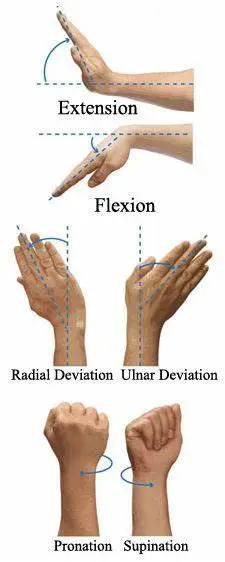
The patient moves the joint during active range-of-motion activities on their own, without help. Enabling the patient to exercise independently is the aim of physical therapy, even if these activities might not be feasible at first. The patient pushes or pulls against an opposing, resistance force when engaging in resistive exercise. Isometric exercises include the patient flexing and extending their muscles while maintaining a fixed joint position.
The physical therapist’s help with these activities is minimal. The therapist’s engagement in these exercises is usually restricted to verbal cues and instructions on how to improve the posture and movement involved in the exercises, which the patient is fully capable of executing. They work well for mild injuries that cause pain, discomfort, or hindrance but do not significantly limit the movement of affected body parts. Over time, this increases your mobility and is beneficial to your general health.
By holding stretches or motions for a minimum of thirty seconds, you can increase your active range of motion. You strengthen the muscles required for a certain activity by doing this.
They are a crucial component of a physical rehabilitation program, designed to facilitate patients’ safe and prompt return to their regular activities.
Benefits of Range of Motion Exercises:
Exercises that increase range of motion (ROM) have several advantages, particularly when used in conjunction with physical therapy and general health maintenance:
- Maintaining Joint Flexibility: Regular range-of-motion exercises assist in maintaining and enhancing joint flexibility. Because it lessens stiffness and helps avoid illnesses like arthritis, this is essential for joint health.
- Improving Joint Function: You may increase the functional capacity of joints by putting them through their whole range of motion on a regular basis. To restore normal movement patterns following surgery or injury, this is very crucial.
- Stretching and lengthening muscles through a range of motion exercises enhances muscular flexibility. This can enhance general muscle function and lower the chance of sprains.
- Preventing Contractures: Contractures are irreversible shortened tendons or muscles that cause a decreased range of motion in joints. Because ROM exercises preserve normal muscle length, they can help avoid contractures.
- Increasing Circulation: As a result of movement, the tissues around the joints receive more blood, which aids in the healing process and lowers inflammation.
- Improving Physical Performance: Increased range of motion helps athletes and those who engage in physical activity by improving their agility, balance, and general performance.
- Helping to Promote Relaxation: During range-of-motion exercises, controlled, moderate motions can help to promote relaxation and reduce muscular tension, which can help to relieve overall stress.
- Improving Quality of Life: People can carry out everyday tasks more easily and with a lower risk of injury when their muscles and joints are flexible and mobile.
- Supporting Posture: Improved posture can lessen stress on the spine and other joints by achieving proper joint alignment and muscular balance through range-of-motion exercises.
- Facilitating Rehabilitation: To restore normal movement patterns and avoid difficulties, ROM exercises are frequently employed in rehabilitation programs following operations or accidents.
Risks of Range of Motion Exercises:
- Drawbacks of Motion Without Movement. Injuries are more likely to occur when a movement is not under your control. A person who doesn’t know your limit could push a joint or muscle farther than it should.
- Increasing your range of motion by stretching a bit beyond what’s normal for you is beneficial. However, pushing too hard might result in a ripped muscle or joint injury.?
- This also poses a concern in AAROM. You shouldn’t be forced to endure agony by anyone.
- There could be certain movements when you just use one side of your muscle. You run the risk of restricting your range of motion if you repeatedly perform a specific action without varying the way you utilize your muscles.
- You develop your biceps, for instance, if you work out at a gym and perform a series of exercises that target particular muscles. You risk reducing your arms’ range of motion if you only concentrate on this muscle group on the back of your arms without incorporating exercises that strengthen your triceps.
- Remember that there should be no pain involved in any range-of-motion exercises. Pay attention to your body’s signals and quit when you’ve had enough. When utilizing a passive or active range of motion, overextending oneself might lead to harm.
Conclusions:
Elderly joint pain decreased after doing six rounds of ROM exercise. When there was no movement, older adults’ low joint pain levels ranged from around 30,3% prior to ROM exercise to 3% following ROM exercise.
In conclusion, include range-of-motion exercises in your daily routine to help preserve joint health, increase flexibility, and improve your physical health in general. People of all ages and fitness levels, from athletes to those recuperating from injuries or managing long-term diseases, can benefit from these activities.
FAQs
How frequently do you perform ROM exercises?
How frequently? ROM exercises should ideally be performed twice a day at the very least. Perform the exercises more often and for longer periods of time each time if you are attempting to regain joint mobility after you have already lost part of it.
What is prevented by ROM exercises?
Patients are frequently recommended range-of-motion exercises to assist restore joint function following an injury. These exercises aim to reduce pain, edema, and stiffness while maintaining flexibility and gradually increasing the range of joint and muscle mobility.
What uses do range of motion exercises serve?
They are a crucial component of a physical rehabilitation program, designed to facilitate patients’ safe and prompt return to their regular activities.
ROM exercise summary: what is it?
Numerous components affect this motion, including the arrangement of the joint’s bone surfaces, the joint capsule, ligaments, tendons, and muscles.
How do ROM exercises help with shoulder pain?
Sitting upright and laying your hand on a table towel with your thumb pointing upward, while maintaining good posture. Your hand should be gently extended laterally as far as it is comfortable. Return to your starting place cautiously and slowly.
Which groups do ROM exercises fall under?
Depending on your injury, you’ll work out using one or more of these three methods: active, passive, or active-passive. This is an explanation of their operation. Exercises for passive range of motion are beneficial for joints that have become immobile as a result of trauma or paralysis.
What is a ROM exercise that is active?
Joint movement is the outcome of opposing muscles contracting and relaxing.
What are the ROM exercise’s conclusions?
Conclusions: Elderly joint pain decreased following six sessions of range-of-motion exercise. When there was no movement, the elderly’s low joint pain level was around 30,3% before to ROM exercise and decreased to 3% following ROM exercise.
Why would you exercise your range of motion?
Exercises including active range of motion aid in enhancing joint function. Your joints’ range of motion determines how far they can travel in various directions. You may fully extend the range of motion in each joint with the aid of these exercises. Exercise helps lessen pain, maintain joint flexibility, and enhance strength and balance.
Which three categories of range-of-motion exercises exist?
Exercises to improve range of motion often fall into three categories.
Range-of-motion exercises done inactively.
Exercises for Range of Motion: Active-Assistive.
Active Range of Motion.
Which four active range-of-motion exercises are there?
Pops of the Ankle. Simply flex and stretch your ankles while lying down.
Heel Slippers. Lay flat, elevate your knee with your heel slipped back, then lower it back down.
Kidnapping Hip adduction. Maintain a straight leg with your heel flexed while lying flat.
Extended Arc Quads.
Why are ROM exercises performed?
Patients are frequently recommended range-of-motion exercises to assist restore joint function following an injury. These exercises aim to reduce pain, edema, and stiffness while maintaining flexibility and gradually increasing the range of joint and muscle mobility.
What is ROM exercise?
The degree to which a muscle or joint in your body can be stretched or moved is referred to as its “range of motion” (ROM). Everybody has a distinct experience.
Which five range-of-motion exercises are there?
Among the exercises for active range of motion are:
Flexing of the shoulders.
horizontal adduction and abduction of the shoulders.
Circumduction of the shoulder.
Rotate and extend the wrist.
Supination and pronation of the forearm.
Elbow extension.
Range of motion activity: what is it?
In order to prevent discomfort from impeding growth, it is crucial that these workouts be increased gradually.
What is the range of motion principle?
Joint form, the joint capsule, ligaments, and periarticular tendons and muscles all have an impact on range of motion. Exercises known as range-of-motion (ROM) allow for the flexion and extension of particular joints.
What safety measures apply to ROM exercise?
Avert sudden or abrupt movements. If pain strikes, stop. Although some initial discomfort is common, you shouldn’t experience any agony. Over time, regular exercise will help lessen the soreness.
How can range of motion be maintained most effectively?
Dynamic stretching is advised as part of the warm-up to prevent athletes from experiencing a loss in strength and performance from static stretching before to a competition or activity.
References
- Difference Between Passive Range of Motion and Active Range of Motion. (2024, February 18). WebMD. https://www.webmd.com/fitness-exercise/difference-between-passive-range-of-motion-and-active-range-of-motion
- Range of Motion Exercises | Mark Niles PT MS CSCS | Physical Medicine and Re. (n.d.). https://www.mark-niles.com/rangeofmotion-exercises.php

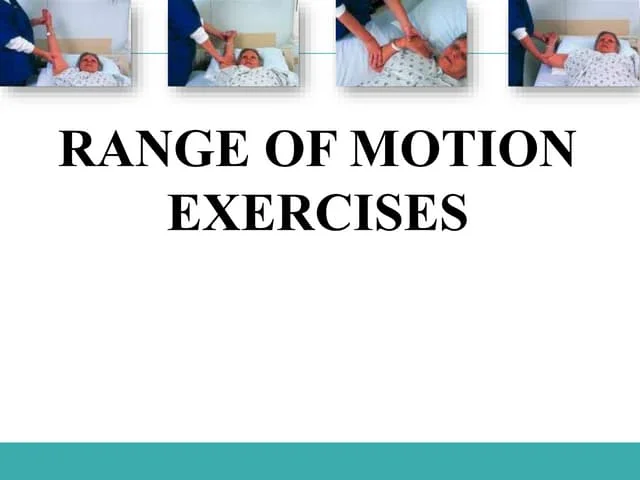

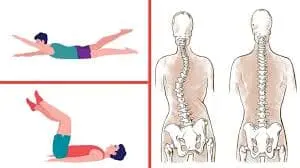
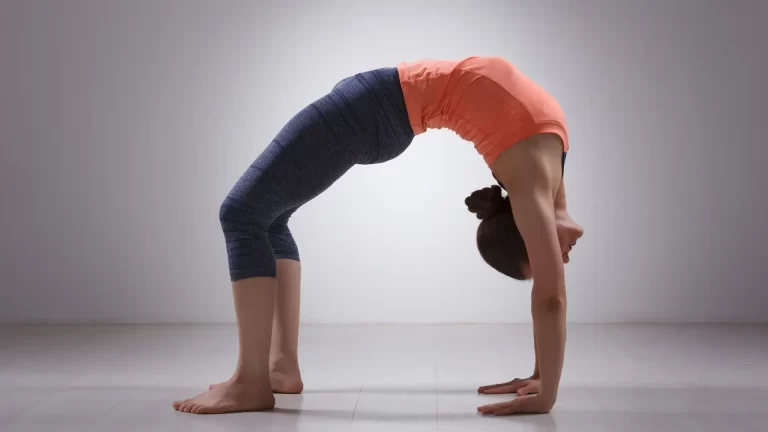
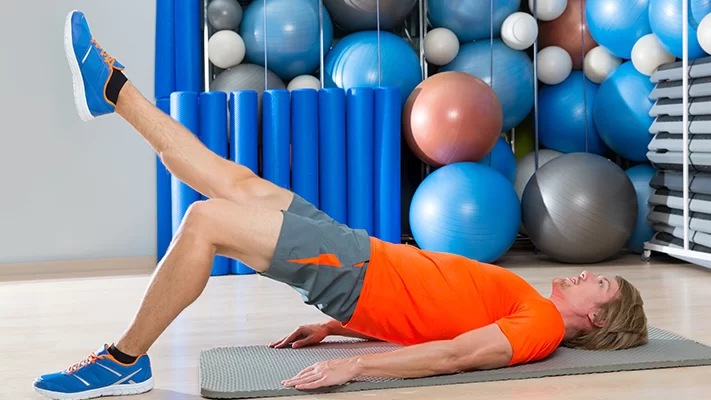


13 Comments